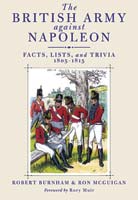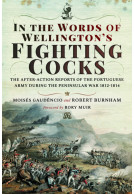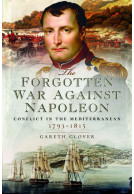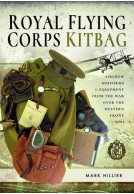The Men of Wellington’s Light Division (Hardback)
Unpublished Memoirs from the 43rd Light Infantry in the Peninsular War

Pages: 240
Illustrations: 8 colour pages
ISBN: 9781399099080
Published: 16th September 2022
(click here for international delivery rates)
Need a currency converter? Check XE.com for live rates
| Other formats available - Buy the Hardback and get the eBook for £1.99! | Price |
|---|---|
| The Men of Wellington’s Light… ePub (5.9 MB) Add to Basket | £6.99 |
Some of the most famous memoirs of Britain’s long war against Napoleon have come from the pens of members of Wellington’s Light Division, but many wonderful accounts were never published and have sat in archives, libraries, museums, and private collections, forgotten for 200 years.
The regiments of the Light Division, and its predecessor, the Light Brigade, were involved in almost every major battle and skirmish fought by Wellington and Sir John Moore in the Peninsular War. Unlike the line infantry, these men were encouraged to think and fight independently and were, often, of a higher educational standard, resulting in vivid descriptions of warfare and campaign life.
However, these memoirs do not simply cover old ground. Many of these accounts were produced within hours, or at most days, after the incidents they describe, and they often portray a very different view of many famous events and cause us to question numerous claims made in those later published memoirs.
Never intended to be published, the memoirs in this book were written only for the men themselves and their families, being penned without the dreaded influence of ‘hindsight’ to alter and temper their views. Consequently, they provide brutally honest assessments of their senior officers, how operations were handled and who made mistakes that have subsequently been quietly covered over.
The Men of Wellington’s Light Division is certain to be welcomed by historians and enthusiasts alike, providing a glimpse into the past that has not been seen before.
“…one gets a good sense of the day-to-day life of the regiment and the concerns of the soldiers for news back home, especially about their families.”
The NYMAS Review
"...it is unquestionably worthy of recommendation."
Andrew Bamford - The Napoleon Series
This is the third of three volumes edited by Gareth Glover covering the regiments of the famous Light Division in the Peninsular War. The first was devoted to the 43rd Foot; the second to the 52nd Foot. Its subtitle, Previously Unpublished & Rare Accounts from the 95th Rifles 1808-14, is a fair summary of this book’s contents, but some pieces by officers who were not actually in the 95th themselves have been included, as noted below.
Arthur Harman, Wargames Illustrated
After a short, five-page account of the service of the 95th Rifles in the Peninsula and at Waterloo, the remainder of the book is devoted to the personal accounts, most arranged by the rank of the writer, from Lieutenant Colonel Andrew Barnard to Sergeant John Lowe, the majority by First Lieutenants. The only piece by a private soldier, a letter by Robert Howarth to his father, dated September 1807, which describes the expedition to Denmark, is included despite falling outside the remit of this volume.
The accounts are of varying length and interest. Here are but three examples:
Brevet Lieutenant Colonel Amos Norcott’s Observations on powder horns and magazines (by which he means the large cow horn powder flask) and suggested Improvements was dated 1816 but explains the various deficiencies of the riflemen’s equipment used in the Peninsular War.
Four letters by Brevet Major Jonathan Leach describe the actions at Rolica, Vimeiro, and the Coa, and the battle of Bussaco in some detail.
The Address of Sergeant John Lowe of the 2/95th to the Duke of Wellington in 1827 describes his service at Vimeiro, Walcheren, Ciudad Rodrigo, Badajoz and Waterloo, and his situation after the reduction of the battalion, working as a cordwainer with a wife and four children to support, having served eleven years and suffering the effects of several wounds, suggesting that ‘his country might possibly have thought him not undeserving of something more than his Waterloo medal and a pension of sixpence a day.’
These are followed by a brief memoir by William Sankey, an army surgeon attached to the Rifle Brigade; letters of Brigadier General Robert Craufurd, commander of the Light Brigade, later the Light Division, from May 1809 to his death at the storming of Ciudad Rodrigo in January 1812; and the journal of Lieutenant James Shaw, 43rd Foot, ADC to Craufurd from November 1809 until his death, and then extra ADC to Major General Charles Alten, the later commander of the Light Division, from November 1812 until November 1813.
A four-page Addendum, containing extracts from five letters by Lieutenant Colonel Charles Macleod, 43rd Foot, discovered after the first volume in the series was produced, concludes the book.
Eight pages of illustrations include quarter page reproductions of contemporary portraits of six of the writers; later photographs of John Molloy and Dr William Sankey; a photograph of a Baker rifle; and a reproduction of James Prinsep Beadle’s famous painting, The Rearguard, showing General Craufurd and a detachment of the 95th Rifles on the retreat to Vigo. Two other reproductions of Richard Simkin’s depictions of the Rifles at Cacabelos in 1809, and Tarbes in 1814, show them – incorrectly – wearing the ‘Belgic’ cap.
Those whose main interest is tabletop battles may not find much that is immediately applicable to their wargames, but collectors of memoirs will appreciate this book.
Glover and Burnham have collected a most useful anthology of primary sources, and they handle them with due caution, highlighting discrepancies where they appear as they inevitably do when hindsight is involved.
Beating Tsundoku
Read the Full Review Here
This book contains a wealth of information, written without the ‘benefit’ of hindsight, which will enrich our understanding of life in Wellington’s army. We highly recommend it as a jolly good read.
Clash of Steel
Read the Full Review Here
As would be expected from a book edited by Gareth Glover, this delivers an excellent view of the men serving in the 43rd Light Infantry in the Peninsula and the War of 1812. The personal accounts are very valuable in gaining understanding of their experiences both on and off the battlefield. That these man are from the same regiment (which in the Peninsula was consistently brigaded with the 52nd and 95th ) allows an opportunity for cross refencing the accounts within the 43rd and in conjunction with those other regiments. Many of the accounts, for example the taking of Cuidad Rodrigo, refer to colleagues killed and wounded in action and the matter of fact way of dealing with it. A really good read and the account by Captain James Fergusson is particularly enlightening.
Michael McCarthy
Michael McCarthy, Battlefield Guide
About Robert Burnham
ROBERT BURNHAM, a retired army officer, has written scores of articles and numerous books on the Napoleonic Wars. He has recently stepped down after twenty-two years as the editor of the Napoleon Series, a fascinating and all-embracing website, the largest of its kind. It is a ‘must’ for anyone interested in the Napoleonic era. It can be accessed at: www.napoleon-series.org
About Gareth Glover
Gareth Glover is a former Royal Navy officer and military historian who has made a special study of the Napoleonic Wars for the last thirty years. In addition to writing many articles on aspects of the subject in magazines and journals, his books include From Corunna to Waterloo, Eyewitness to the Peninsular War and the Battle of Waterloo, An Eloquent Soldier, fourteen volumes of The Waterloo Archive, Waterloo: Myth and Reality, The Forgotten War Against Napoleon: Conflict in the Mediterranean 1793-1815, The Two Battles of Copenhagen 1801 and 1807: Britain and Denmark in the Napoleonic Wars and Marching, Fighting, Dying: Experiences of Soldiers in the Peninsular War.
No other regiment in Wellington’s Peninsular army can compare with the 95th Rifles. Even before Bernard Cornwell’s Sharpe novels and television series, the Rifles were the most famous of all the British Army’s fighting formations. Unlike the red-coated regiments of the Line, the Riflemen were trained to act with a degree of independence, selecting their own targets in battle. As a result, a number of the officers and some of the men were more literate than their counterparts in the Line, or at least were more willing to record their experiences fighting the French. Consequently, many of…
By Gareth GloverClick here to buy both titles for £50.00




























